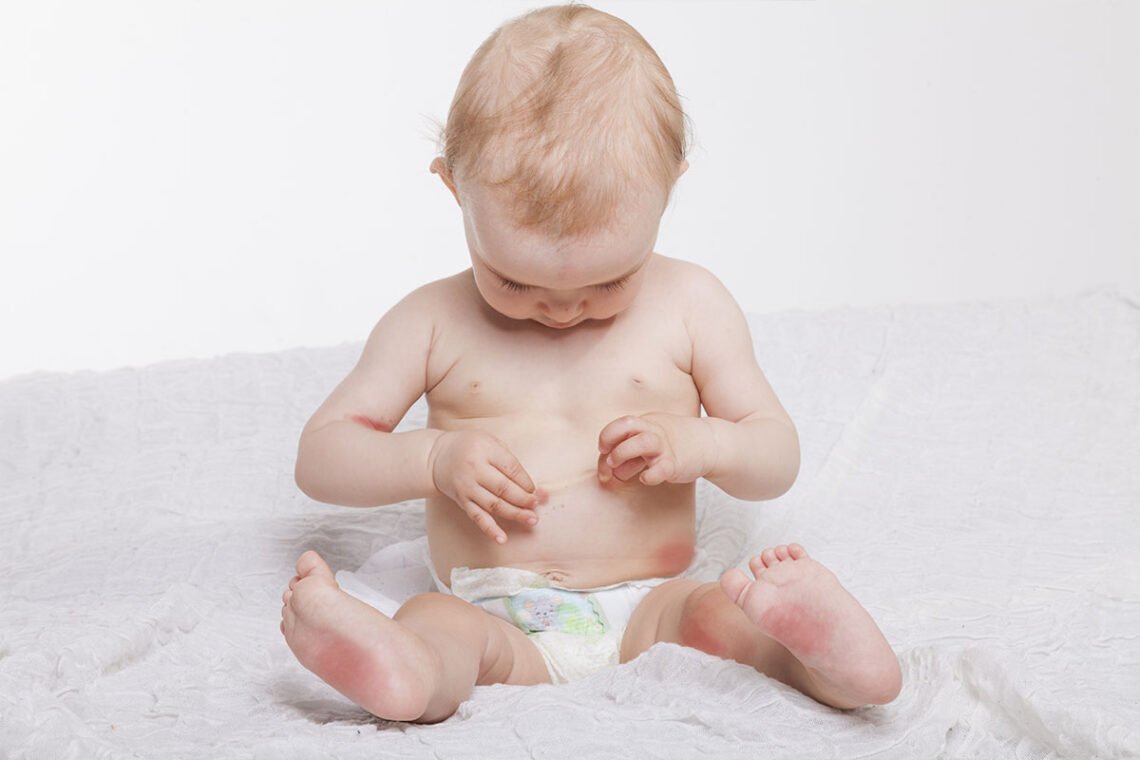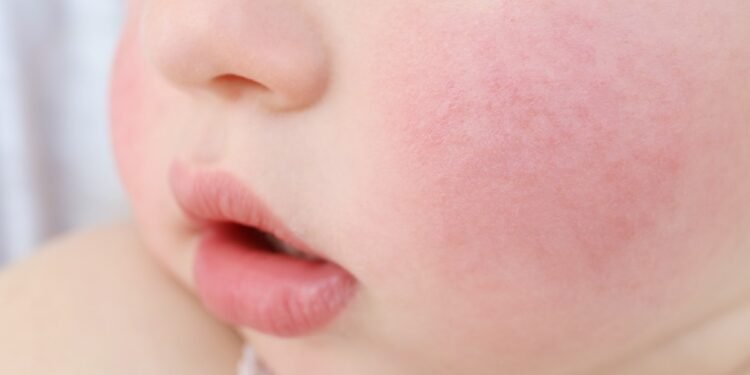Manifestations of atopic dermatitis in children are well known, cradle cap is an example. In fact, in the first months of life, infants affected by dermatitis tend to present the symptoms in the convex areas of the body: the head is the best-known example but also the cheeks and forehead are subject to irritation. In this period the vesicular form with crust predominates, while after 2 years dermatitis mainly manifests itself with lichenification and desquamation, especially on the legs, arms, and between the skin folds.
Atopic dermatitis is a chronic skin disease rather common among children: it affects about 15-20% of the pediatric population in Europe and tends to remission in adolescence. The causes at the origin of this skin pathology can be many and are to be found between genetic and environmental factors, but it is still impossible to determine them in a specific way. For this you can only intervene by acting on the effects: itching, xerosis, eczema, redness, and peeling of the skin can be kept under control with appropriate therapies, moisturizing, emollient, or cortisone-based, specially designed for the sensitive skin of children.
How To Deal With It

Although it is a disorder that can be kept under control very well, dealing with it in children presents some more difficulties than in adults. The little patients, in fact, tend to tolerate treatment poorly and not control themselves in case of itching. Therefore, the management of the disease can create some problems for parents who are faced with it.
First of all, the mothers and fathers of children with atopic dermatitis may find themselves displaced by the dosages and methods of administering the treatment. In fact, it is not easy to recognize the various stages of the disease and to understand which creams to use: wet and moist patches, for example, require different applications from the manifestations with lichenification or desquamation. Given the relapsing trend and the various lesions that atopic dermatitis can cause, the most suitable remedy is not always available at home and there is often the risk of resorting to inappropriate treatment.
For this reason, it is important to keep the little ones under close dermatological control and to show the child to your doctor whenever the symptoms of dermatitis appear.
In addition to all this, the application of the treatment can also be problematic.
It often happens that a child tends to scratch vigorously or rub the skin on the sheets, thus exposing the skin to the action of bacteria and increasing inflammation. It is not excluded that in the most violent forms the itching is so intense that it does not allow the baby to sleep.
To extinguish and alleviate the symptoms of atopic dermatitis, there are excellent topical creams, emollients, and moisturizers, but the application of the treatment is not always easy on a child. The dressing, in fact, is experienced as an unpleasant moment or a punishment and faced with firm opposition, especially if it is long and involves bandages.
To experience topical therapy more serenely, there are some small tricks that can help the child to face the situation with more serenity, transforming the moment of applying the therapy into an opportunity for play and parent/child contact.
The first useful tip is to avoid spreading the cream directly on the baby’s skin: let’s try to rub it between your hands and apply it with a massage, perhaps starting from the feet and doing a little tickling, and then getting to the face, which is the part where children do not like to be touched.
The Most Severe Cases And The Allergic March

On the other hand, there are more serious cases, in which, in addition to the skin lesions typical of atopic dermatitis, there are other symptoms involving organs and are associated with bronchial asthma, rhinitis, conjunctivitis, weight loss (the so-called allergic march ). To deal with the more aggressive manifestations of the disease, it is good to resort to an interdisciplinary approach that sees the involvement of several specialists: dermatologist, pediatrician, allergist, and gastroenterologist.
To give support to families facing this pathology, there are therapeutic education plans: these are courses aimed at guaranteeing the child and parent’s autonomy in the management of dermatitis.
However, if our child presents irritation, redness, or other symptoms of atopic dermatitis, there is no need to be alarmed: although there is no definitive cure, there are excellent remedies to keep its manifestations at bay and it should be considered, that the disorder could disappear. once puberty is reached.
Read More: What Is Newborn Colic?












